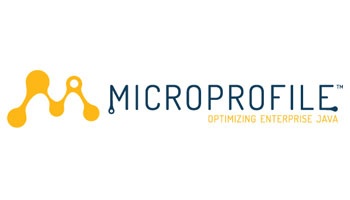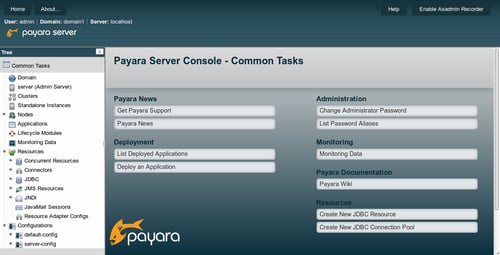Archive from June 2018
Back to Basics – アプリケーションをPayara Server / GlassFish 4.1にデプロイする方法
Published on 29 Jun 2018
by Ahmed Qureshi
Topics:
Payara Server Basics,
How-to,
GlassFish,
GlassFish basics,
Japanese language
|
0 Comments
MicroProfile OpenAPI in the Payara Platform
Published on 28 Jun 2018
by Matthew Gill
Topics:
Payara Micro,
Microservices,
MicroProfile,
Payara Server
|
8 Comments
One of the new features in Payara Platform version 5.182 is full compatibility with MicroProfile 1.3. In this blog post, I will introduce OpenAPI 1.0, a new API in MicroProfile 1.3. This functionality is available in both Payara Server and Payara Micro in version 5.182. It's also available in version 4.1.2.182 for Payara Support customers.
Back to Basics - Payara ServerをUbuntuにインストールする
Published on 27 Jun 2018
by Ahmed Qureshi
Topics:
Payara Server Basics,
How-to,
GlassFish,
GlassFish basics,
Japanese language
|
0 Comments
Introduction to Clustered Singleton
Published on 22 Jun 2018
by Lenny Primak
1 Comment
Getting The Full Picture From The Jakarta EE Community
Published on 22 Jun 2018
by Debbie Hoffman
0 Comments
Setting Up Cache JPA Coordination with the Payara Platform using EclipseLink and JMS/Hazelcast
Published on 21 Jun 2018
by Lenny Primak
Topics:
JMS,
Hazelcast,
Clustering,
Eclipse
|
6 Comments
When it comes to clustering and distributed computing performance, some of the challenges you have to overcome involve cache invalidation and coordination. Fortunately, both Payara Server and Payara Micro come with EclipseLink, which supports cache coordination and invalidation out of the box. This blog will explain how to configure this feature for your Payara Data Grid. We would also like to thank Sven Diedrichsen who is the community member that created the Hazelcast cache coordination.
Be Reactive and Micro with a MicroProfile Stack
Published on 18 Jun 2018
by Ondro Mihályi
Topics:
Payara Micro,
Microservices,
MicroProfile
|
0 Comments
A Step-by-Step Guide from Traditional Java EE to Reactive Microservice Design
Published on 18 Jun 2018
by Ondro Mihályi
Topics:
Java EE,
Microservices
|
4 Comments
A workshop given at JPrime conference in May 2018.
Have you wondered how you can improve the design of your applications to improve its performance? You probably heard that reactive design can help achieve better response time and make your applications more flexible. But you’re asking: Do I need to rewrite my applications from scratch? Do I need to learn a new framework for all that? The answer is no, especially if your application is built on top of Java EE and Java 8.
BMW Group Used Payara Support to Migrate from GlassFish to Payara Server
Published on 17 Jun 2018
by Debbie Hoffman
Topics:
GlassFish Migration
|
0 Comments
Payara® Support provided BMW Group with a smooth migration path from GlassFish to Payara® Server and Java EE 7. Knowing that Payara Services offer a guarantee of 10 years of support for the Payara Server 4.x branch ensures a stable basis for BMW Group’s applications.
What's new in Payara Server & Payara Micro 5.182
Published on 12 Jun 2018
by Arjan Tijms
Topics:
Payara Platform 5
|
6 Comments
How Decisions Are Made: Jakarta EE and Eclipse MicroProfile
Published on 11 Jun 2018
by Steve Millidge
Topics:
Java EE,
MicroProfile,
JakartaEE
|
0 Comments
Recently I was tasked with preparing a presentation on an update to Jakarta EE and Eclipse MicroProfile® and it got me thinking about the organisation and structure involved in this huge effort to transform Java EE into a truly open source standard under the Eclipse Foundation. While organising my thoughts I put together a picture showing the structure and tensions of this undertaking to help people understand what various groups do and perhaps how better to get involved. The structure and governance is evolving as I write this so I may not get everything right.
Did You Know? Payara Server Comes with a Domain Pre-Configured for Production Use Out-of-the-Box!
Published on 01 Jun 2018
by Mike Croft
Topics:
Payara Server
|
0 Comments











